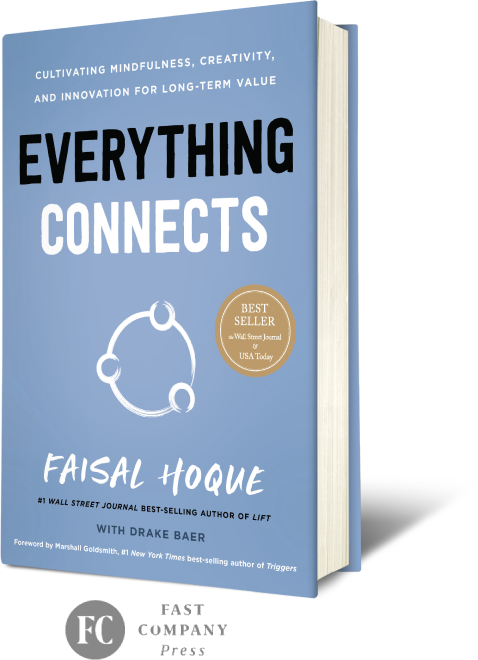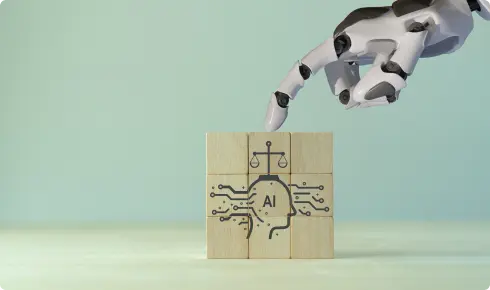Value is truly multifaceted—emotional, tactile, even spiritual.
[This article is adapted from the Wall Street Journal and USA Today best selling book Everything Connects by Faisal Hoque.]
Companies, organizations and leaders can all talk a very good game about focusing on the long term. But relatively few actually follow through.
As Amazon founder Jeff Bezos points out:
“..if you’re willing to invest on a seven-year time horizon, you’re now competing against a fraction of those people, because very few companies are willing to do that.”
That hesitancy to commit to the long-term can have serious consequences, not the least of which is its impact on creating value—more specifically, long-term value.
While many might have a fairly superficial definition of value, a more comprehensive one involves the component of enriching others’ lives. A truly valuable product or service engenders a powerful, bonding sense of investment—how will a consumer investing in something be of real benefit to them? How do they feel when they use a product or service? How do they connect with it? How may it enrich their lives?
 As we note in my book “Everything Connects,” the more that we can attend to the different facets of value, of the ways that our individual lives and organizations can enrich the lives of others, the more deliberately we create it. From value creating, profits will emerge, and not just short-term profits—value that is long term, replicable and sustainable, not to mention more meaningful.
As we note in my book “Everything Connects,” the more that we can attend to the different facets of value, of the ways that our individual lives and organizations can enrich the lives of others, the more deliberately we create it. From value creating, profits will emerge, and not just short-term profits—value that is long term, replicable and sustainable, not to mention more meaningful.
One of the first steps to take in the pursuit of long-term value touches on the element of time Amazon’s Bezos noted at the beginning of this column. Part of the art of running a long-term organization is to recognize the relationship between the daily and the monthly, the quarterly and the yearly. Since we only get to experience things at one point in time, we tend to think that now is the only moment and can only see how it relates to the future or the past upon reflection—the short-term tunnel vision that Bezos believes minimizes the potential for long term value.
Instead, look around you carefully the next time you’re in an Apple store. Focus on the younger children and teenagers—not to mention a fair share of adults–happily playing on a display iPad or computer. That’s not a tableau that’s necessarily going to end in an immediate purchase decision; rather, it’s a focus on fun and freedom, the stuff that hints at long term interest—hence, long term value. Moreover, it’s almost immediately personal. All those screens tilted at a 70-degree angle isn’t just coincidence—when the user adjusts them to match his or her needs, in effect, they’re making it their own.
In this way, value is a single event happening across many entities. When value is created, it resonates within everybody involved: a quality product enriches the lives not only of the people who own it, but also the people who devised the product in the first place, the people who built it and those who sell it—everyone within the product’s ecosystem.
Moreover, take note that price is not mentioned even once in this entire discussion about value. That’s not to say that doesn’t play a part—it does—but it’s the experience and the connection that the user feels that moves any transaction beyond the immediacy of using a debit card or scribbling out a check. That’s a form of value built for the long haul.
But, when considering the goal of creating long term value, don’t limit your thinking to just one particular product or idea. Rather, be aware that, in developing any product or service, you’re also nurturing other core competencies that can be directed to a variety of ideas and services. UPS is an ideal example. Having organized itself around becoming the best in shipping, in so doing the company built a number of internal strengths–it became a technology company, an airline, and an insurance company, not to mention building the managerial and infrastructure capabilities to handle all the facets of shipping. When shipping itself began to mature and level off in growth, the company was at the ready with this lineup of competencies—a catalyst for long term value creation.
Therein lies another key to fostering long term value—flexible, adaptive platforms. The most sustainable way to create value is to continually invest in our capabilities, both as individuals and organizations. The more we grow in who we are and the varied skills that we can offer, the less limited we are in our pursuit of long-term value creation. In effect, we can take it in any number of directions.
That development also touches on another element of long-term value creation. Since long term value encompasses any number of elements—enjoyment, enrichment, varied benefits, to cite just a few—it’s important that the user experience be of the highest quality possible. And that can only come from a source with genuine expertise. Phrased another way, for the user to experience a masterful performance, the performance must be done by a master. The values created by a product mirror the skills invested in it.
A company or organization that successfully creates long-term value has effectively embraced the crucial nature of empathy–that is, a recognition of the human experience of whatever product we are using our skills to produce. It’s a view of value that goes far beyond price tag or profit margin. Value is truly multifaceted—emotional, tactile, even spiritual.
And those feelings and experiences can last a lifetime—the ultimate manifestation of long-lasting value and meaning.
Moreover, don’t overlook a more inward creation of long-term value. It’s important to recognize what our work is doing to—and for—us. In looking to offer comprehensive, meaningful long-term value to others, we also foster it in ourselves. That’s something we should all be mindful of, far more often than many of us take the time to do.
© 2022 by Faisal Hoque. All rights reserved.















